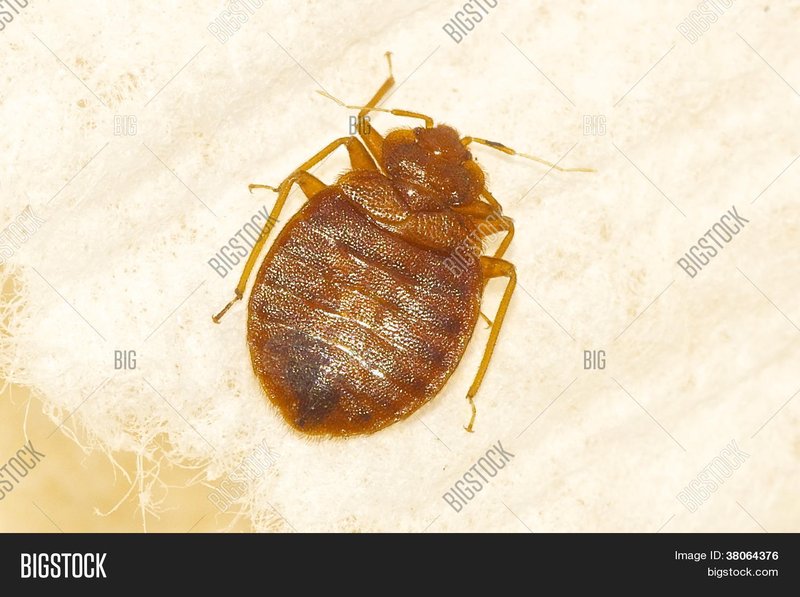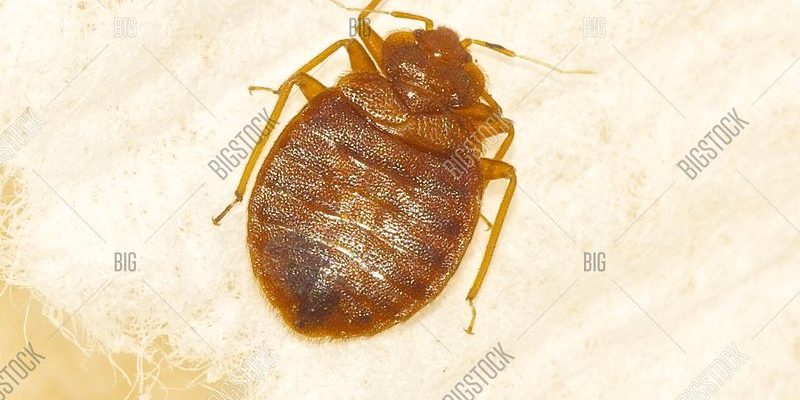
Have you ever woken up with tiny, itchy bites on your skin and wondered where they came from? You’re not alone! Many people encounter these pesky little creatures known as bedbugs. These insects are more than just a nuisance; they can cause real sleepless nights and anxiety. Bedbugs are tiny, reddish-brown insects that feed on human blood, mainly at night. They typically hide in cracks, crevices, and upholstered furniture, making them hard to spot.
Understanding bedbugs is crucial if you want to prevent or deal with an infestation. They’re resilient and can thrive in various environments, which means spotting them and taking action early is essential. The more you know about their habits, habitats, and life cycles, the better equipped you’ll be to keep them out of your home. So, let’s dive into the fascinating world of bedbugs!
What Are Bedbugs?
Bedbugs, scientifically known as Cimex lectularius, are small, wingless insects that belong to the family Cimicidae. Adults are typically about the size of an apple seed, around 1/4 inch long. These little critters are notorious for their nocturnal feeding habits. They come out at night to feed on human blood while you sleep, often leaving behind itchy welts on your skin.
These pests have a flat, oval shape, which helps them hide easily in dark spaces. A male bedbug can live for several months without a meal, which is one reason they can be so hard to eliminate. They reproduce quickly, with a female able to lay hundreds of eggs in her lifetime. You might be surprised to learn that bedbugs don’t carry diseases. However, their bites can lead to secondary infections due to scratching and can affect sleep quality, causing further issues.
Habitat and Distribution
You might be wondering where bedbugs like to hang out. These bugs are well-known for their ability to hitch a ride on luggage, clothing, and furniture, making them a common issue in hotels and public transport. They prefer warm environments and can thrive in homes, dormitories, and even office buildings. Once they get into a space, they can spread quickly, moving from room to room.
Bedbugs are often found in places where people sleep, such as mattresses, bed frames, box springs, and headboards. During the day, they tend to hide in cracks and crevices, behind wallpaper, or in furniture seams. Because they can live for months without feeding, even an empty room can harbor a population if they were there before. The spread of bedbugs is often exacerbated by travel, so if you’ve been to a new place, it’s wise to check your belongings before returning home.
Identifying Bedbugs
Identifying bedbugs can be a bit tricky, especially when they’re hiding. However, knowing what to look for can help. Signs of an infestation include small blood spots on your sheets, darkish brown spots of bedbug excrement, and of course, the bugs themselves. Adult bedbugs are about 5-7 mm long and are brown in color, but they can appear reddish after a meal.
Look under your mattress, along the seams, and in any crevices nearby. You might also find eggs or shed skins, which are tiny and white. If you spot any of these signs, it’s best to act quickly. An early response can prevent a larger problem down the line.
Life Cycle of Bedbugs
Bedbugs go through several stages in their life cycle: egg, nymph, and adult. The female bedbug can lay anywhere from 1 to 5 eggs per day, and these eggs hatch in about 6 to 10 days. Nymphs are small and initially colorless but will turn a brownish hue after their first meal of blood. They go through five molts before reaching adulthood, which can take about 5 weeks under optimal conditions.
This life cycle is why bedbugs can multiply so quickly, and why it’s critical to address an infestation promptly. The more you understand how fast they reproduce, the more motivated you’ll be to take preventive measures or seek help if they invade your space.
How to Prevent Bedbugs
Prevention is key when it comes to bedbugs. Start by inspecting any second-hand furniture or clothing before bringing it into your home. Washing or drying your clothes on high heat after traveling can also help eliminate any hidden pests. When staying in hotels, keep your luggage off the bed and inspect the room for signs of bedbugs before settling in.
At home, reduce clutter to limit places for bedbugs to hide. Consider using protective mattress covers designed to keep bedbugs out. Regular cleaning, including vacuuming your home, can also help keep these pests at bay. Remember, a little prevention goes a long way!
Dealing with an Infestation
If you find yourself dealing with a bedbug infestation, don’t panic! There are effective ways to address the issue. Start by isolating the affected areas. This may include moving your bed away from walls and ensuring that bedding does not touch the floor. Regular vacuuming can help remove bugs, but it’s crucial to dispose of the vacuum bag properly afterward.
Heat treatment is one of the most effective methods for eliminating bedbugs. These pests can’t survive temperatures above 120°F (49°C). If you prefer chemical treatments, there are various insecticides available, but these should be used carefully and sometimes in conjunction with professional pest control services.
Signs of Bedbug Bites
Bedbug bites can often be confused with bites from other insects. They usually appear in clusters or in a line and can be very itchy. The skin may develop red welts or bumps, and the reaction can vary from person to person. Some may not react at all, while others could experience severe itching or even allergic reactions.
If you suspect bedbug bites, try to refrain from scratching, as this can lead to infections. Instead, consider applying a cool compress to reduce swelling and using anti-itch creams for relief. Keeping a close eye on the bite sites can help you determine if they worsen, which might indicate the need for medical attention.
Table of Bedbug Facts
| Common Name: | Bedbug |
| Scientific Name: | Cimex lectularius |
| Size: | 1/4 inch (adult) |
| Color: | Brown to reddish-brown |
| Habitat: | Near beds, furniture, and cracks in walls |
| Diet: | Human blood |
| Life Span: | Several months to a year |
Bedbugs may be tiny, but they can create a big headache if they infest your home. By learning how to identify them, understanding their life cycle, and taking preventive measures, you can effectively combat these pests. While bedbugs don’t pose a health risk, the discomfort and stress they cause should not be underestimated.
Whether you’re traveling or at home, staying vigilant is your best defense against these unwelcome intruders. If you do find yourself facing an infestation, remember that help is available, and with the right approach, you can reclaim your space and peace of mind.
FAQ
How can I tell if I have bedbugs?
Look for several signs, including small red bites on your skin, blood spots on sheets, and brown or black specks of bedbug excrement. Inspect your mattress and furniture for actual bugs or eggs, which are about the size of a pinhead.
Are bedbug bites dangerous?
While bedbug bites can be quite itchy and annoying, they are not known to transmit diseases. However, scratching the bites can lead to infections. If you have a severe allergic reaction or your bites worsen, it’s best to consult a healthcare professional.
How do bedbugs spread?
Bedbugs can hitch a ride on clothing, luggage, or used furniture, making them easy to spread from one location to another. They often travel in shared spaces like hotels, public transport, and dormitories.
Can I get rid of bedbugs on my own?
Yes, but it can be quite challenging. You can try various methods, including vacuuming, heat treatments, and using specific insecticides. However, for a significant infestation, you may want to consider hiring professional pest control services.
What should I do if I find bedbugs in my home?
If you discover bedbugs, immediately isolate the area by moving furniture away from walls and not moving infested items around the house. Start vacuuming and consider using heat treatments or contacting pest control for more extreme measures.
How can I prevent bedbugs when traveling?
To prevent bringing bedbugs home from your travels, inspect hotel rooms for signs of bedbugs, keep luggage off the bed, and wash your clothes in hot water when you return home. Using protective covers for your luggage can also help keep them at bay.
What are the stages of bedbug development?
Bedbugs go through an egg stage, followed by five nymphal stages before they reach adulthood. Each nymphal stage requires a blood meal to progress to the next stage, which is why bedbugs multiply quickly.
Do bedbugs live in clean homes?
Absolutely! Bedbugs are not a sign of uncleanliness. They can thrive in any environment as long as they have access to a host for feeding. However, clutter can provide more hiding spots, making them harder to deal with.
Can my pets get bedbugs?
Bedbugs don’t typically target pets, as they prefer human blood. However, pets can carry bedbugs or their eggs on their fur. It’s essential to check and keep your living space and your pets clean to minimize any potential for bedbug encounters.
How long can bedbugs live without feeding?
Bedbugs are remarkably resilient and can survive for several months without a meal, especially in cooler conditions. This is why it’s crucial to address infestations promptly before the population grows.
What temperatures kill bedbugs?
Bedbugs cannot survive temperatures above 120°F (49°C). Using heat treatment, such as steaming or placing items in a hot dryer, can effectively eliminate them in all life stages.
Is it safe to use insecticides for bedbugs?
Yes, but it’s essential to follow safety guidelines on the product label closely. Consider using insecticides specifically designed for bedbugs, and keep in mind that some products may require treatment in conjunction with other methods for effectiveness.

